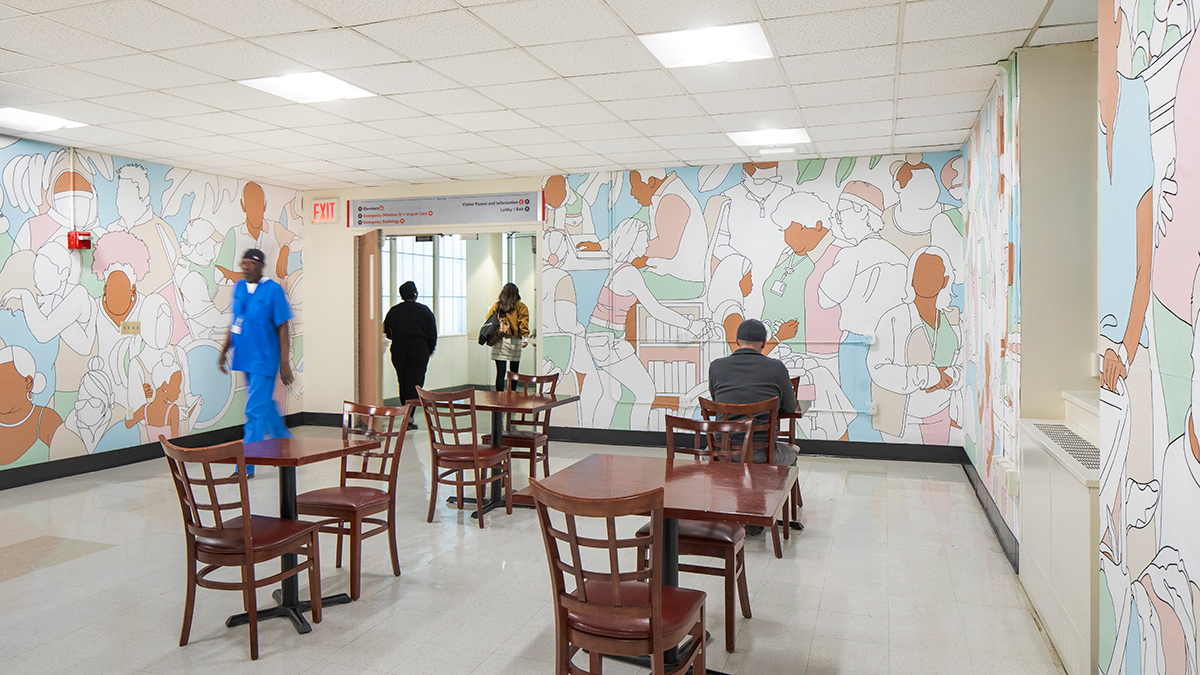Research & Evaluation
At NYC Health + Hospitals, the Arts in Medicine department plays a vital role in supporting the well-being of healthcare workers through innovative programs that integrate art and creative expression into the workplace. As healthcare systems face unprecedented challenges, particularly with worker burnout and retention, our department leverages arts interventions to foster empathy, reduce stress, and enhance connection among staff, ultimately improving the overall culture and resilience of the healthcare environment.
Our Research and Evaluation Strategy: Ways of Knowing
4 Key Objectives:
- Impact on Healthcare Workers: Assess and analyze how arts-based interventions enhance emotional resilience, deepen empathy, and foster stronger interpersonal connections among staff. Feedback indicates that participants in our arts a pp feel “seen, heard, and cared for,” which contributes to their emotional wellbeing and job satisfaction.
- Iterative Improvement: By engaging in continuous evaluation and research in collaboration with leaders at our healthcare facilities we are able to consistently fine tune and improve upon initiatives and evaluative approaches ensuring efficacy and helping to build trust within the system.
- Contribution to Global Thought Leadership: Through ongoing evaluation and research we contribute to the growing body of knowledge around the intersection of art and healthcare, influencing thought leadership in this emerging field.
- Economic and Cost Benefits: Arts programs provide a significant return on investment by reducing burnout and improving retention, thereby mitigating costs associated with high turnover and absenteeism. Data from our surveys and interviews show a positive correlation between arts interventions and improved staff wellbeing, which can ultimately lead to reduced turnover costs and higher job satisfaction.

NYC Health + Hospitals is participating in the Hospital Murals Evaluation (HoME), a global evaluation of the impact of murals in hospitals being led by the Jameel Arts & Health Lab, established in collaboration with the World Health Organization. In the first study of its kind, the HoME study seeks to advance understanding of the impact that murals in hospitals and other clinical settings can have on people who view these large visual artworks including patients, staff, and visitors. The project will involve a mixed-methods study at sites in Slovenia, Nigeria, the UK and the US.
